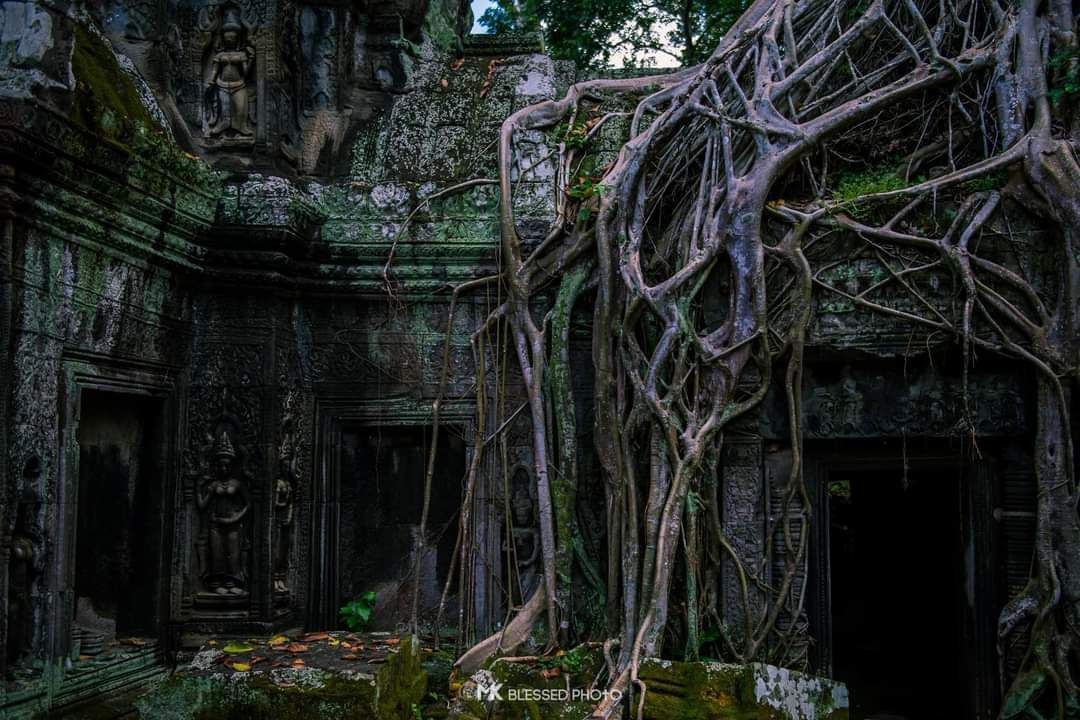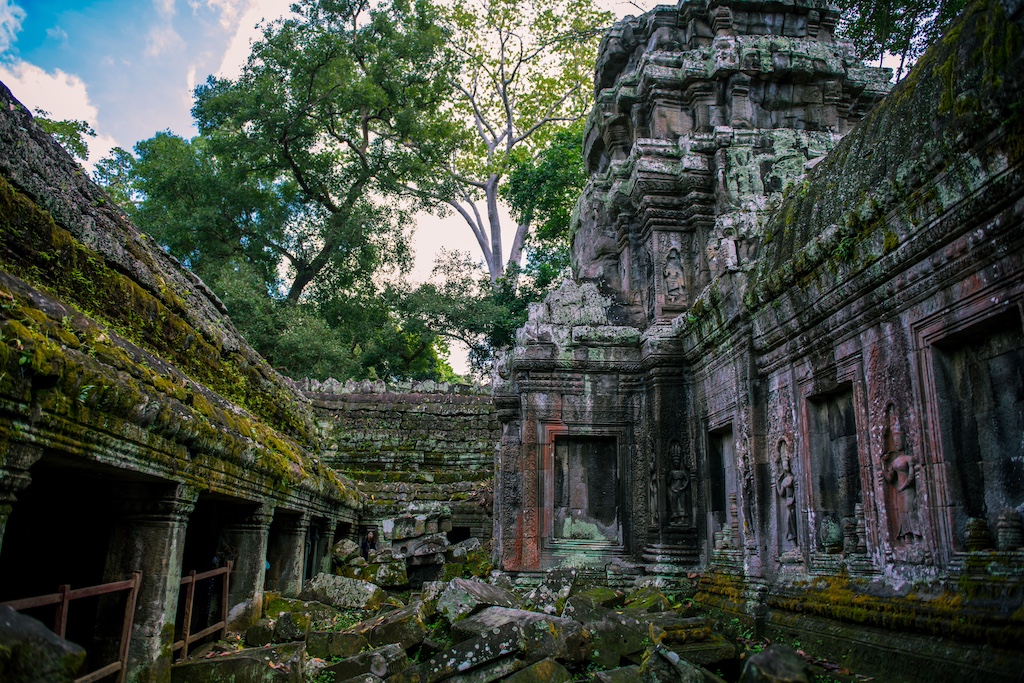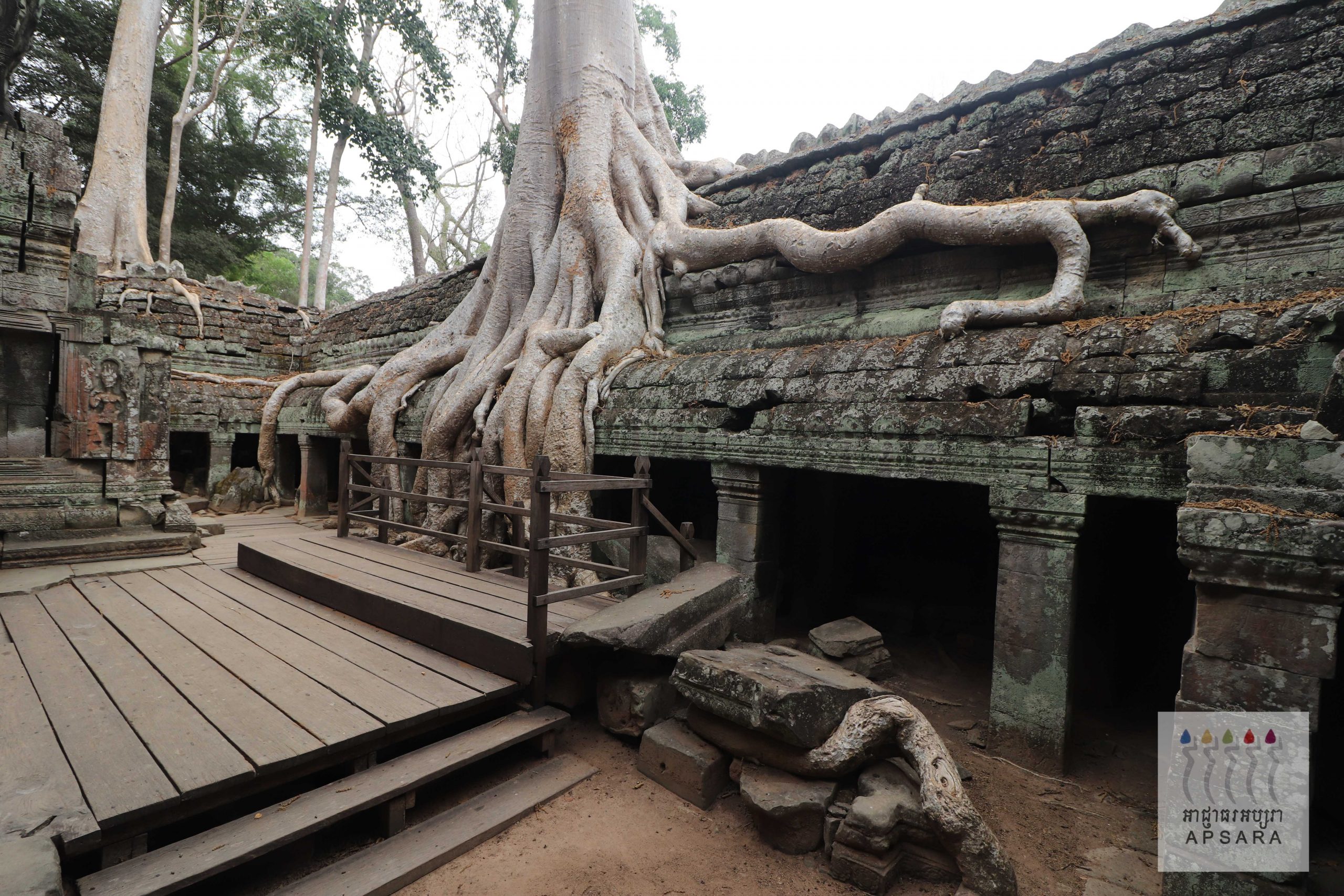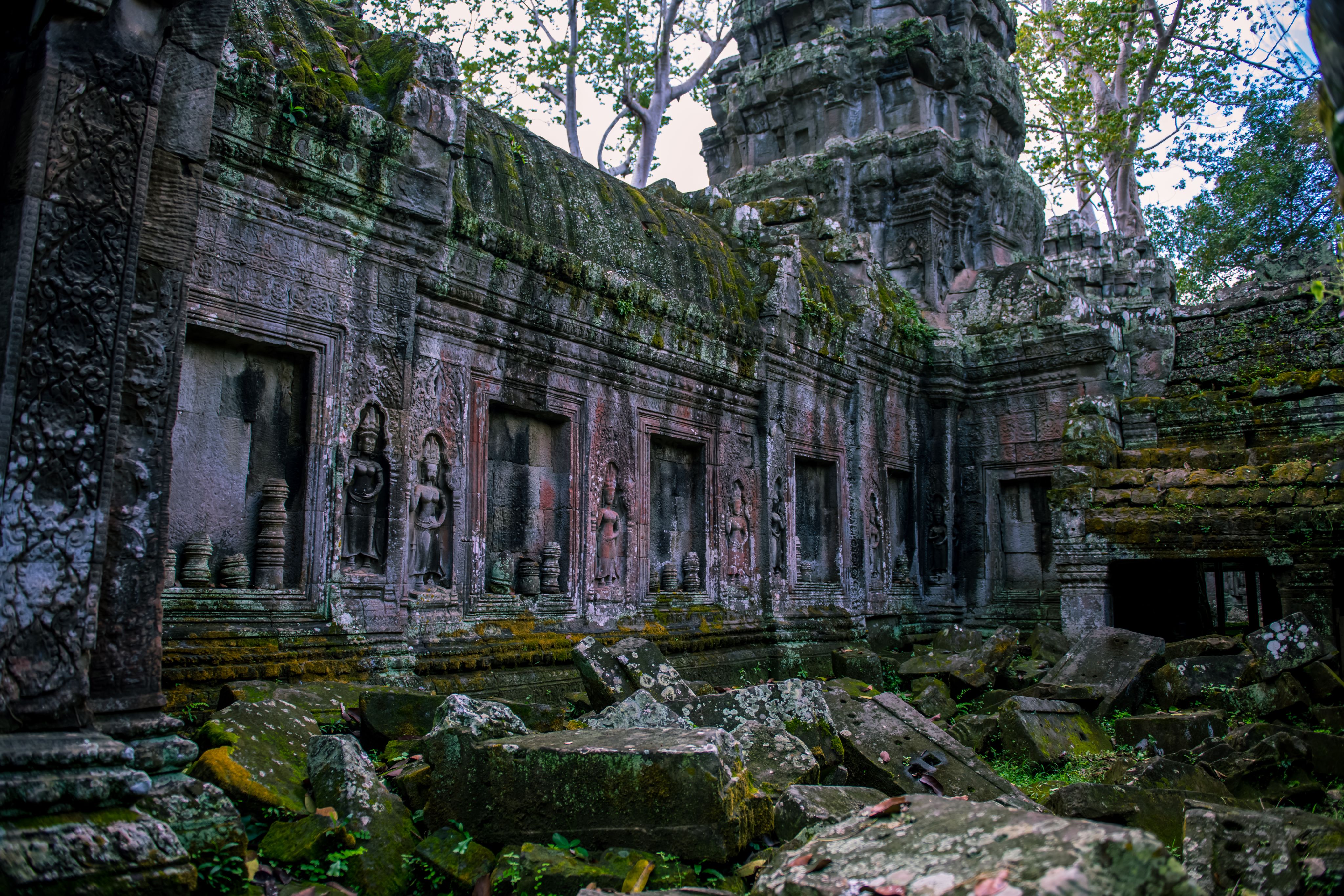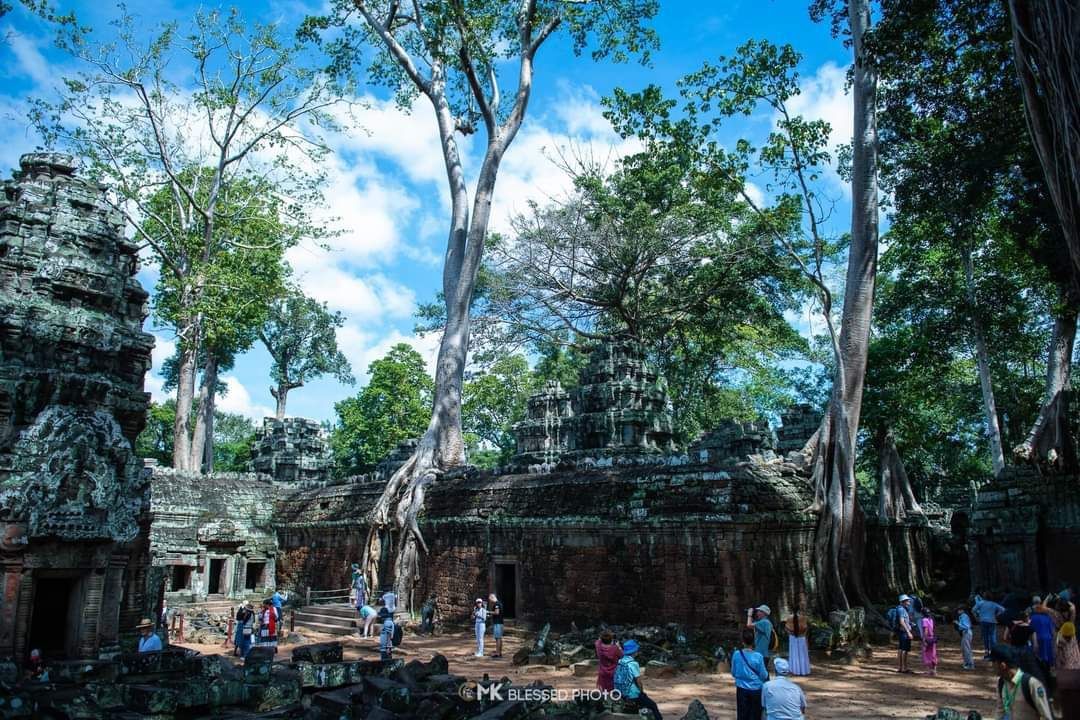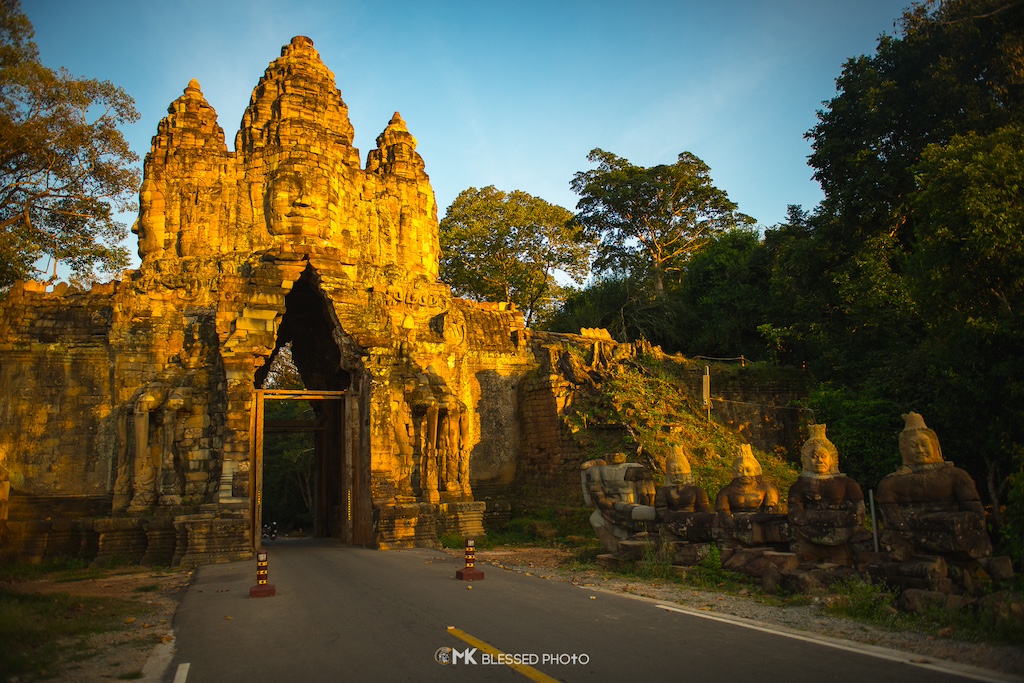(Photos by: MK Blessed Photo & Apsara National Authority)
Ta Prohm: Embracing Nature's Majesty Amidst Ancient Ruins
Ta Prohm, a temple that stands as a striking embodiment of nature's power and beauty intertwined with human history, is one of the most evocative and popular temples in the Angkor complex. Built in the late 12th and early 13th centuries by King Jayavarman VII, this temple was originally named Rajavihara (Monastery of the King) and was dedicated to the king's mother.
Unlike many of the Angkorian temples, Ta Prohm has been largely left in its natural state, with massive tree roots intertwining with the stone ruins. This intentional preservation offers a unique and surreal experience, showcasing the power of nature as it slowly reclaims man-made structures.
The temple's layout is a typical flat Khmer temple plan, with five rectangular enclosing walls around a central sanctuary. Intricate bas-reliefs, although less grandiose than those of Angkor Wat, depict scenes from ancient mythology and everyday life. The dense jungle surrounding the ruins and the sound of bird calls add to the mystical, almost otherworldly ambiance of Ta Prohm.
The most iconic feature of Ta Prohm is the gigantic silk-cotton and strangler fig trees that grow out of the towers and corridors. These trees, with their massive roots, are so seamlessly integrated with the architecture that they have become a part of the structure itself, creating a visual spectacle that has captivated visitors and photographers from around the world.
Ta Prohm was also used as a location in the film "Tomb Raider," which added to its popularity. Despite its fame, the temple retains an air of mystery and grandeur, making it a must-visit destination for anyone exploring the heritage of Siem Reap.
Major Sight Spots in Ta Prohm
Tree-Entwined Structures: Iconic trees merging with the ruins.
Central Sanctuary: The heart of the temple complex.
Hall of Dancers: Featuring intricate carvings.
Bas-reliefs: Depicting mythological and everyday scenes.
Outer Enclosures: Encompassing tranquil courtyards and hidden corners.


